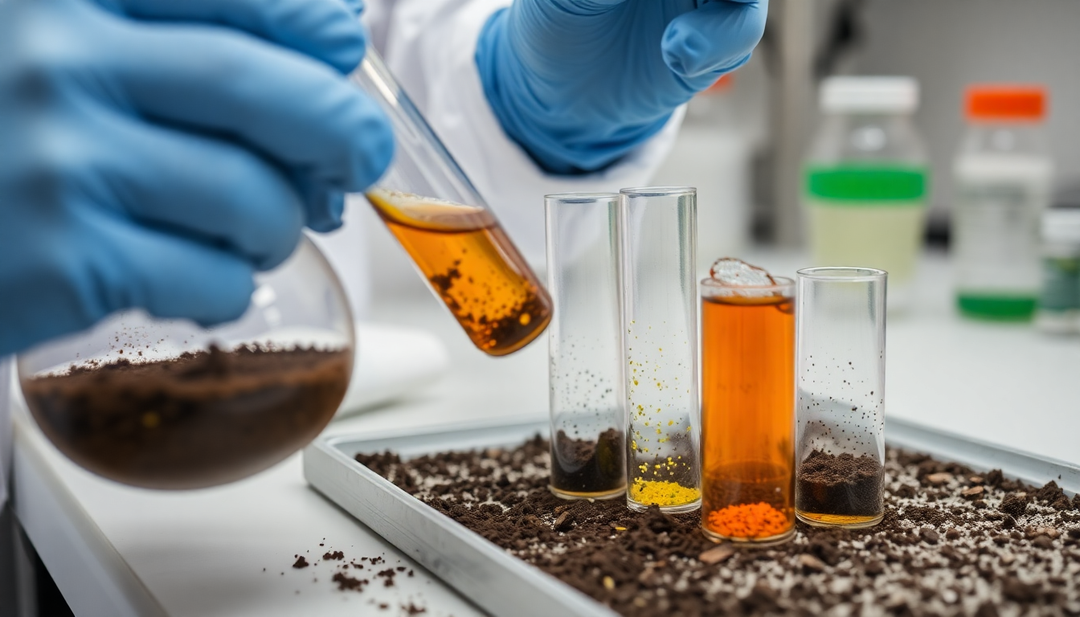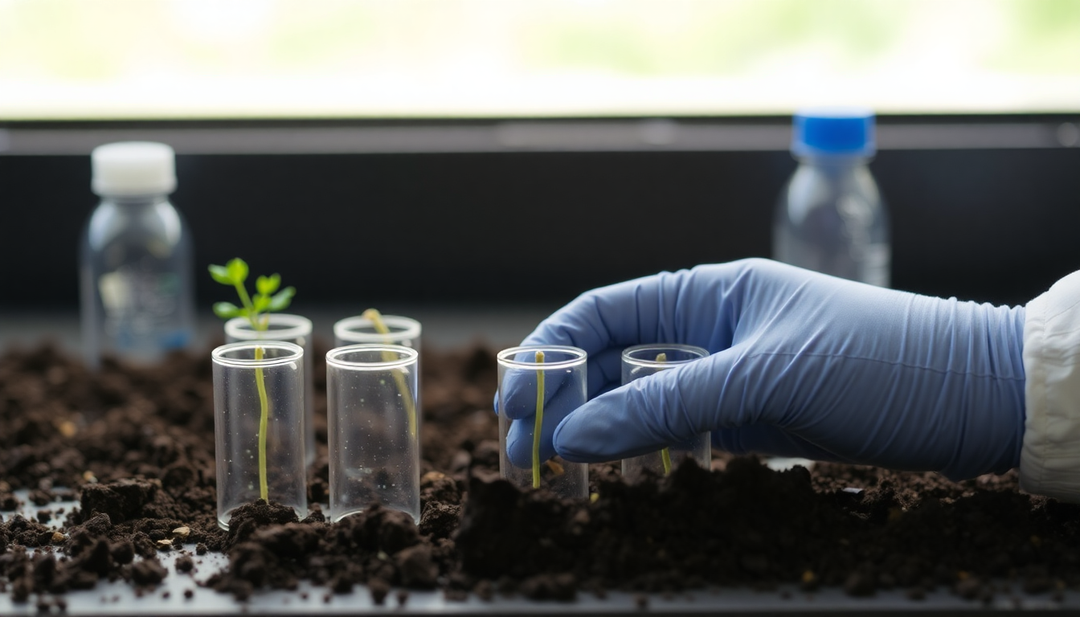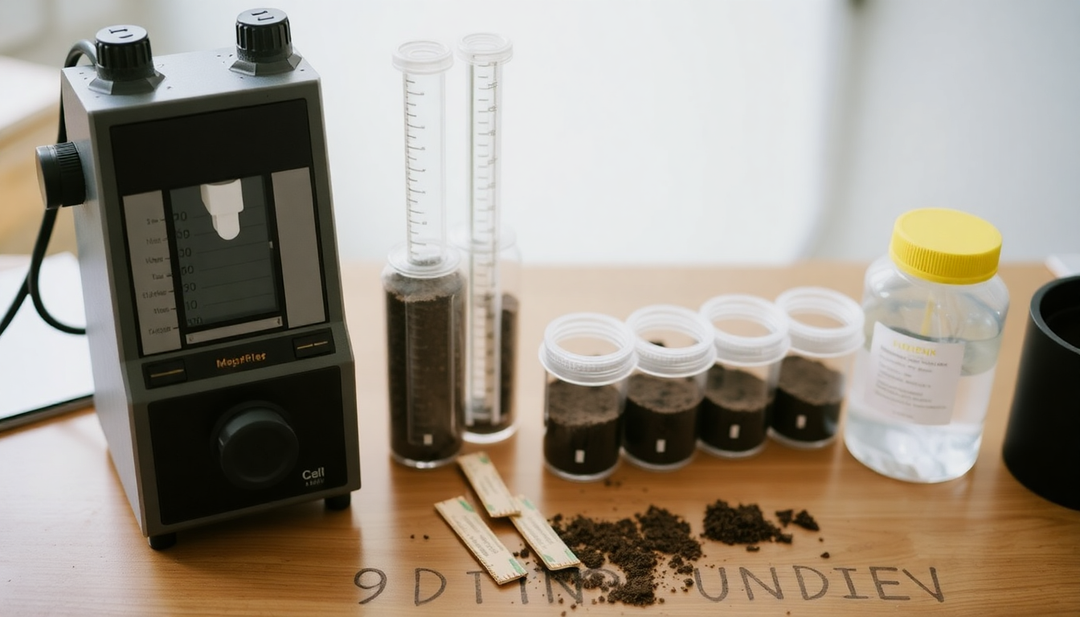Soil Pollution in 2025: Understanding Contaminants, Analysis Methods and Costs for Effective Assessment

Introduction
Soil pollution is a major issue in 2025, impacting not only human health but also biodiversity, agriculture, and the economy. Understanding contaminants, analytical methods, and associated costs is essential for effective assessment. This article aims to explore these topics in depth, highlighting the importance of analysis, the diagnostic process, and providing relevant case studies and practical advice.
Why is Soil Pollution a Problem?
Soil pollution results from various human activities, including industry, intensive agriculture, and urbanization. The main problems associated with soil pollution include:
- Impact on human health: Contaminants can enter the food chain, affecting the health of consumers.
- Decreased biodiversity: Contaminated soil harms soil-dwelling organisms, impacting ecosystems.
- Degradation of water resources: Pollutants can contaminate groundwater, making drinking water unsafe.
- Economic impact: Cleaning up polluted soil is costly for communities and businesses.
These issues highlight the importance of acting quickly to assess and treat soil pollution.
Soil Contaminants
Soil can be contaminated by a variety of harmful elements. Here are some of the most common contaminants:
- PCBs (Polychlorinated Biphenyls): Used in electrical transformers, these compounds are persistent and toxic.
- PAHs (Polycyclic Aromatic Hydrocarbons): Products of incomplete combustion of organic matter, they are carcinogenic.
- BTEX (Benzene, Toluene, Ethylbenzene, Xylenes): These organic solvents are often associated with the petroleum industry and can cause respiratory illnesses.
- Heavy metals: Lead, mercury and cadmium are common contaminants, often from industry.
- Cyanide: A critical contaminant, often present in mining sites, it is highly toxic.
- Fluorides and chlorides: Used in various industrial processes, their presence can affect water quality.
- Sulfate: Although naturally occurring, high concentrations may indicate industrial contamination.
These contaminants can have harmful effects on ecosystems and human health, justifying increased vigilance.
Soil Analysis Methods
To assess soil pollution, several analysis methods are available. Here are the most common:
- Chemical analysis: This method helps identify the presence of specific contaminants, including heavy metals and organic compounds.
- Texture and granulometry analysis: These analyses help to understand the physical composition of the soil, which can influence the behavior of contaminants.
- Acid-Base Status Assessment: Soil pH is crucial in determining its health and ability to support plant life.
- Organic and biological status analysis: This method assesses organic matter richness and microbial biodiversity, essential for healthy soil.
- Soil chemical balance: A comprehensive soil assessment helps identify imbalances that may result from pollution.
These methods help to identify the nature and degree of contamination, allowing a relevant assessment for remediation.
Costs for an Effective Assessment
The cost of a soil pollution assessment can vary depending on several factors:
- Size of the area to be analyzed: The larger the area, the higher the sampling and analysis costs will be.
- Type of contaminants present: Some contaminants require more expensive analysis techniques.
- Analysis methods chosen: Costs vary depending on whether routine or more specific analyses are chosen.
- Lab and Equipment Fees: Specialty labs may charge different rates depending on their equipment and expertise.
It is advisable to plan an adequate budget to ensure a complete and accurate assessment, taking these factors into account.
Diagnostic Process
The process of diagnosing soil pollution generally takes place in several stages:
- Preparation: Identification of the site, past activities and potential risks.
- Sampling: Collection of soil samples at specific depths, following rigorous protocols.
- Laboratory analysis: Examination of samples to detect the presence of contaminants.
- Interpretation of results: Analysis of data to assess the degree of contamination and associated risks.
- Final Report: Drafting of a detailed report including recommendations for remediation.
This process is essential to ensure a thorough understanding of the situation and to make informed decisions regarding remediation.
Case Studies
Several case studies illustrate the importance of effective diagnosis:
- Abandoned industrial site: A former factory was identified as a source of heavy metal contamination. Analyses determined the need for remediation before any repurposing of the site.
- Urban area: Soil testing in a developing neighborhood revealed high levels of BTEX, requiring remediation to protect groundwater and the health of future residents.
- Farm: A farm suffered yield losses due to pesticide contamination. Analyses helped determine the best rehabilitation protocols.
These examples highlight the importance of conducting analyses before undertaking construction or development projects, in order to avoid additional costs and health risks.
Practical Tips for Soil Analysis
To ensure effective soil analysis, here are some practical tips:
- Choose a certified laboratory: Make sure the laboratory has the necessary accreditations to perform soil analyses.
- Conduct representative sampling: Collect samples from different locations and depths to get a complete picture of contamination.
- Document all steps: Keep track of the methods used, results and recommendations for maximum transparency.
- Stay informed about regulations: Soil pollution standards are evolving. Stay up-to-date on legal requirements and best practices.
- Involve stakeholders: Inform local communities and stakeholders of the results to foster a collaborative approach to remediation.
Conclusion
In 2025, soil pollution remains a crucial challenge. Understanding contaminants, adopting appropriate analytical methods, and planning costs are essential for effective assessment. Preventing and quickly remediating soil pollution is essential to protect public health and preserve the environment. Don't hesitate to contact Pouryère for more information on our soil analysis and diagnostic services. Together, let's take a step toward a healthier and more sustainable future.



